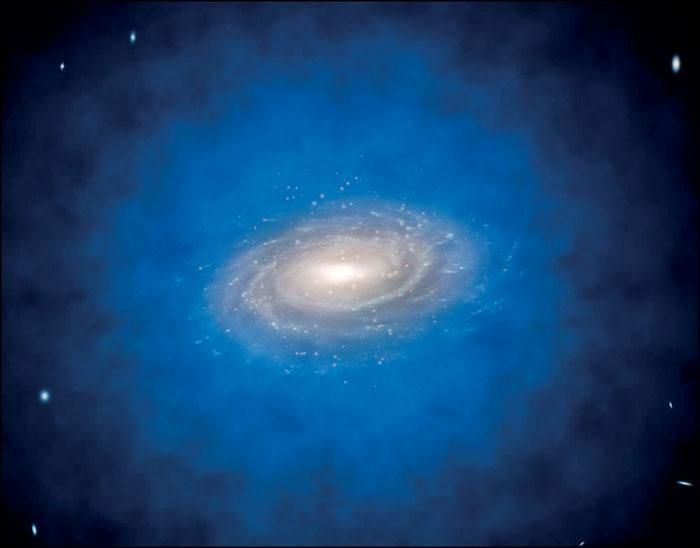Large Blue Halo Around Ancient Milky Way-Type Galaxies Is Made Of Lyman-Alpha Photons, Study Reveals

In order to understand the formation, composition and evolution of distant stars and galaxies, scientists use a technique known as spectroscopy, which relies on the fact each element — containing a unique number and configuration of electrons — absorbs and emits a distinctive wavelength of light.
The most distant galaxies exhibit a distinctive spectral feature, shining brightly in the Lyman-alpha line, which is associated with hydrogen gas that has been heated up by the ultraviolet emissions of newly-formed stars. However, as two studies published in the latest edition of the Monthly Notices of the Royal Astronomical Society reveal, not all the Lyman-alpha photons produced around hot, young stars manage to escape from the centers of galaxies.
“Newly born stars in very distant galaxies are hot enough to break apart hydrogen in surrounding clouds of gas, which then shines brightly in Lyman-alpha light, in theory the strongest such features observable in a distant galaxy,” Jorryt Matthee from the Leiden University in the Netherlands, the lead author of one of the studies, said in a statement. “Yet in practice, Lyman-alpha photons struggle to escape galaxies as gas and dust block and diverge their travel paths, making it a complex process to understand.”
In order to find out exactly what fraction of Lyman-alpha photons are emitted from galaxies, the researchers studied nearly 1,000 distant galaxies — including some that existed when the universe was less than three billion years old — using the Isaac Newton Telescope on La Palma in the Canary Islands. These observations allowed them to determine how many Lyman-alpha photons each galaxy should produce, and to compare it to the number actually emitted.
They found that for galaxies like the Milky Way, only 1 or 2 percent managed to escape. The rest get blocked by gas and dust, and end up forming giant, faint blue haloes around their parent galaxies.
“Galaxies forming stars in the distant universe seem to be surrounded by an impressively large, faint halo of Lyman-alpha photons that had to travel for hundreds of thousands of light years in an almost endless series of absorption and re-emission events, until they were finally free. We now need to understand exactly how and why that happens,” David Sobral, an astrophysicist at Lancaster University, and lead author of the second study, said in the statement.
Scientists believe that understanding the exact amount of Lyman-alpha photons emitted by galaxies, and how this escape fraction changes over time, is key to comprehending not only how galaxies and stars evolve, but also to getting a clearer picture of the conditions prevalent when the universe was still young.
© Copyright IBTimes 2024. All rights reserved.






















